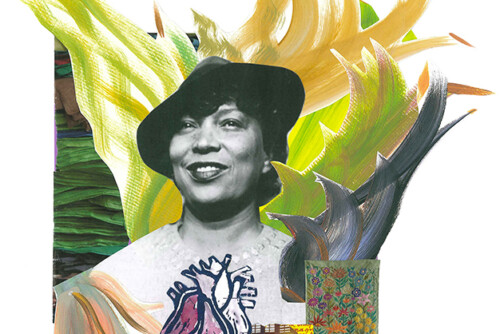Conclusion
In response to the post-September 11th backlash, the category “Arab, Muslim, South Asian” has been incorporated into liberal U.S. multicultural discourses. Consider, for example, diversity initiatives that have operated to single out Arabs, Muslims, and South Asians as the only “targeted communities” in the post-9/11 moment. 1 In such instances, terms such as “targeted communities” have reinforced a multicultural rainbow where specific marginalized groups are associated with specific historical moments while occluding the historical circumstances that produce oppression, marginality, and institutionalized racism, and overshadowing links between groups that have shared similar histories of immigrant exclusion and racism. That many liberal immigrant-rights organizations referred to anti-immigrant policies underlying the PATRIOT Act of 2001 as an “Arab, Muslim, and South Asian” issue and “Border Protection” Bill HR4437 of 2006 as a Latino/a issue—even though both pieces of legislation affected Arabs, Muslims, South Asians, Latinos/as (and other immigrants as well as citizens), and even though the intensified anti-immigrant sentiment sparked by the aftermath of September 11 facilitated support for the HR4437—exemplifies this pattern.
Transgressing liberal multicultural approaches, many racial justice activists and scholars have agreed that survivors of 9/11-related federal government policies and incidents of harassment in the public sphere tended to be Arab, Muslim, and South Asian, but that this is not an isolated case of group marginalization. A new racial justice discourse thus emerged that called attention to anti-Arab/Muslim/South Asian racism, insisted that racial justice movements take the link between U.S.-led war in Muslim majority countries and the marginalization of Arabs, Muslims, and South Asians in the United States seriously, and linked the targeting of Arabs, Muslims, and South Asians to experiences of other communities with shared histories of oppression, including, but not limited to, Japanese Americans, Filipinos, Latinos/as, and African Americans. Yet prevailing articulations of “race” within U.S. racial and ethnic studies tend to preclude comparative research and teaching on the links between the racialization of Arabs, Muslims, Middle Easterners, and South Asians and other communities that have been historically targeted by racism, colonization, and state violence.
In the late 1960s, San Francisco State University was the site of the longest campus strike in the nation’s history, spearheaded by the Black Students Union and the Third World Liberation Front (a coalition of the Black Students Union, the Latin American Students Organization, the Filipino-American Students Organization, and El Renacimiento, a Mexican-American student organization). This movement demanded the expansion of the college’s new Black Studies Department (the nation’s first), the creation of a School of Ethnic Studies, and increased recruiting and admissions of minority students. On March 21, 1969, this strike officially came to an end with the establishment of the School of Ethnic Studies, which included a focus on Asian Americans, Latinos/as and Native Americans, and an expanded Black Studies Department. This movement, based on the strategic deployment of the terms “Third World people” and “people of color,” legitimized the establishment and expansion of ethnic studies programs that place communities with shared histories of oppression by the United States government at the center of study, analysis, activism, and empowerment. Yet this paradigm, which operates according to a 1960s understanding of what constitutes racism has the potential to limit our categories of analysis to those established during the height of student movements for ethnic studies in the 1960s. U.S. women of color feminisms have tended to reify these categories. Contemporary articulations of this paradigm foreclose discussions on how the meaning of “race” has continued to shift and preclude analyses of how “racism” is constantly being remade depending on the historical context. At the same time, many recent conversations within U.S. racial and ethnic studies have explored how research on emergent forms of racialization in relationship to both previous as well as new and current historical processes might contribute to historically situated conceptualizations of race and racism in a post-9/11 environment.
In this essay, I have attempted to bring new questions to bear on the study of race, particularly in terms of analyses of the intersections of race and gender: What are the implications of continually re-evaluating our understanding of racialized-gendered identities in light of new and changing historical moments? What are the possibilities for envisioning U.S. racial and ethnic studies and U.S. women of color feminisms in ways that remain connected to the 1960s student and civil rights struggles through which they were produced, while becoming more attentive to current gendered-racialization processes? How might becoming attentive to the gendered-racialization of Arabs, South Asians, and/or Muslims contribute to explorations of the relationship between race, gender, colonization, and empire or the relationship between histories of “internal” U.S. colonialisms and the structures of imperialism, race, gender, and sexuality that operate against immigrants with whose homelands the United States is at war?
My research reinforces existing theoretical approaches that tend to define U.S. race and ethnic studies, ascontending that “race” is malleable and shifting, racial categories are socially and historically constructed, and the construction of racial categories is a continuous process that takes on new and different forms within different historical moments. It also affirms U.S. women of color feminisms that call attention to differences within racialized communities (such as those of class, gender, sexuality, and religion) and contend that experiences of oppression shaped by both racism and sexism simultaneously cannot be subsumed within either a feminist framework that critiques sexism or an antiracist framework that is only critical of racism. 2 It has also illustrated that research on the gendered racialization of the “Middle Eastern/Muslim” or the “Arab/Muslim/South Asian” “enemy within” can generate important new questions, such as: To what extent does the rhetoric of an endless, fluid “war on terror” that “knows no boundaries” produce new forms of gendered racialization that are similarly arbitrary, open-ended, and transgress borders and particular geographic places?



